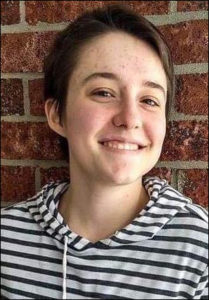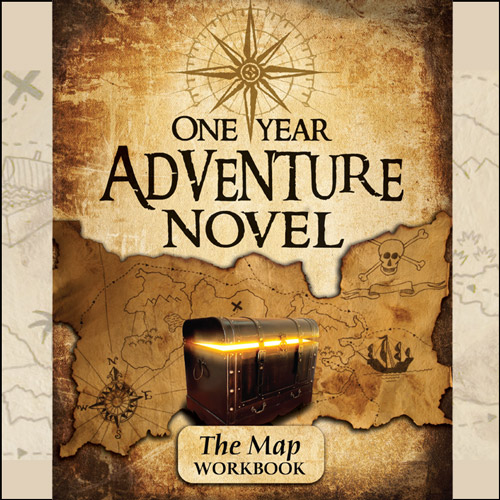Story Diversity: Creating Complex Characters
 By Gabrielle Schwabauer, Staff Writer
By Gabrielle Schwabauer, Staff Writer
This post is a companion to Challenging the Mental Default: Reasons to Fire Your Muse.
I’m a college student. Every Tuesday and Thursday this last semester, when I boarded the on-campus bus, I saw middle-aged women and gray-haired men and teenagers barely out of high school. I saw dark skin, light skin, medium skin. I saw bright red hair and thick, curly hair and bleached hair and hair dyed blue at the ends. I saw full outfits composed of name-brand athletic clothes and hoodies that went past the wearer’s fingertips and dress suits and polka-dotted skirts and nebula-print leggings. I saw tall people, short people, people in wheelchairs, people on crutches.
In a word, diversity.
Ironically, most conversations about diversity are applied exclusively to hot-button issues like race and gender. But while those categories are certainly important facets of diversity, they’re not the be-all and end-all of a diverse cast. Here are a few more areas in which diversity, in the most literal sense possible, can breathe life into your stories:
AGE. Why does everyone in your dystopian resistance movement have to be between thirteen and forty? Where’s the grandmotherly figure who has waited all her life for a chance to oppose the establishment? Where’s your story’s young Gavroche, in over his head in a cause he barely understands?
SOCIAL CLASS. You don’t get a pass on this one just because your story has multiple social classes. Where are the lower-class people who exploit the suffering of their peers for personal gain? The ones who follow a religion of peace and believe the revolts to be unethical? Where are the upper-class people who sympathize with the revolution, or who oppose the revolution but refuse to resort to violence, or the ones with a meaningful family life? Use nuance; don’t just paint entire socioeconomic strata with a broad brush.
MOTIVATION. Your allies are following the hero around for a lot of different reasons. She wants to get inside the huge walled city to rescue her baby brother. He wants to make restitution for betraying a man who was kind to him. She believes she finally has a chance to be on the right side of history. He just wants to get a job.
OPINIONS AND CONVICTIONS. Your heroes don’t agree on everything! At some point, they’re going to realize that two of them think that competitive wrestling is demeaning and violent and three of them think that it’s exciting and appealing. And as it turns out, there’s a wrestling tournament tonight . . . (And hey, your villains won’t always agree, either. Unless they’re a bunch of drones being mind-controlled by their evil overlord, villainous characters will differ in personality and willingness to cause harm.)
HEALTH. You don’t have to be writing a capital-letters Cancer Story to include characters who aren’t perfectly able-bodied, either temporarily or permanently. Characters may be blind or deaf, they may struggle with severe anxiety, they may be allergic to certain foods or animals, they might have broken limbs or be paralyzed from the waist down. Long periods of travel in difficult conditions will result in colds, flu, stomach cramps, mental fog, etc. Physically taxing experiences, especially if they’re far more taxing than your hero’s daily routine, will lead to genuine ailments, not just hunger and sleepiness.
RELIGIOUS BELIEFS. There’s nothing wrong with writing characters who share your convictions, or even portraying one religion as objectively true. Just remember that, in the real world, religious beliefs (and the lack of them) are fairly common, and vary widely from person to person. Even within one general religion, there are always factions and subsets. Even if all of your characters worship the Creator, they’ll still have different philosophies on free will, suffering, personal responsibility, lying for a “good cause,” and so on.
HOBBIES/INTERESTS. Don’t fall into the trap of implying, whether directly or indirectly, that the only interesting, worthwhile, or intelligent people are bookworms, warriors, or both. Give the human race the dignity of being fascinating and meaningful in all sorts of different ways. Let your heroes love basketball, or pretty dresses, or accounting, or all three.
Okay, you say, but that all sounds like a lot of work. What’s the point?
1. Stories thrive on the unexpected
Now, I’m certainly not arguing that you should subvert tropes just for the sake of subverting them. “Bizarre and nonsensical” is not necessarily preferable to “stale and overused.” Above all, your choices have to serve your story.
I’m not asking you to toss the tropes aside. I’m asking you to remind your brain, over and over again, that there are tropes, and that you don’t have to follow any of them. Don’t let fear hold you back from putting yourself in the shoes of an unfamiliar narrator, especially if that narrator has a uniquely compelling perspective on the events of your novel.
2. Diversity reflects reality.
One of the most common complaints I see with regard to writing a diverse cast is that it will come across as forced. After all, if you only include a female character because she is female, doesn’t that feel awkward and stilted? Won’t she be flat?
The answer is yes. But that doesn’t mean you shouldn’t write about women. The problem here is the underlying assumption that female characters aren’t normal, and that they will stand out to the reader. If you start with that mindset, you will consider “female” to be the character’s defining trait, which leaves you with a two-dimensional woman who really does feel like a token female. This is true of any of the categories we’ve discussed—above all, each character is an individual, not an age, a culture, or a political alignment.
Think back to my example about riding the campus bus. It’s hard for me to accept the idea that including characters with a wide variety of physical characteristics feels “forced” or even “unrealistic,” because I witness that variety on a daily basis. Except in a few specific situations (certain types of historical fiction come to mind), it is unrealistic for all of your characters to look the same!
Don’t limit yourself to the conventionally attractive 20-something models you’re going to find on Pinterest. Remember scars, freckles, crooked teeth, and birthmarks. Remember that body types vary; height and weight vary. Sometimes “forced” just means that you did it on purpose, and writing with intention is not a bad thing.
3. Diversity creates empathy
If you’re unable to step into the mindset of someone who doesn’t share your gender, skin color, age range, or hobbies, that’s probably a sign that you’re not done growing as a writer. It’s okay to practice. It’s okay to deliberately structure a character’s traits in order to help yourself develop empathy for another subset of the human race. The more abilities, activities, and characteristics you are capable of approaching in a realistic and compassionate way, the more tools you have in your writing toolbox, and the richer your stories will become.
…
What stories have challenged you to empathize with someone very different from you?
…
Gabrielle Schwabauer has loved stories for as long as she can remember. (The Lord of the Rings holds the top spot, as it has for twelve years running.) She likes reading books, playing video games, eating pancakes, looking at pictures of borzoi, and having already written today.




Wonderful tips. These were really good reminders. Thank you, Gabrielle!
Wow I really liked how you explained all this diversity stuff while making sure no one gets left out.